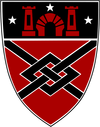|
Culturally Authentic Pictorial Lexicon
The Culturally Authentic Pictorial Lexicon is a dictionary database of images of various objects in a culturally authentic setting for language learning. All images are presented with a Creative Commons Attribution-NonCommercial-ShareAlike license, allowing for broad academic use by language teachers.[1] The database is also useful for researchers in the field of applied linguistics, visual cognition, and automated image recognition.[2] The database averages 30,000 hits per month and has been incorporated into the curricula of many college and high-school level German teachers.[3] The idea for the lexicon is partially based on Shaughnessy's experience with teaching materials that used American-based images and clip art to demonstrate German words and concepts.[4] By presenting objects in their culturally authentic context, the CAPL is designed to prepare students to live in the environment where the language is spoken.[4] The photographic entries are real photographs, not clip art, to force teachers to "teach terms for things that actually occur in everyday German life – instead of American concepts that have no direct European equivalent."[4] The project was founded in 2003 as a pilot project with over 1,000 unique entries for the German language. The first images were collected by Shaughnessy in Germany and Austria through a grant from W&J College.[1] In 2006, it received a $200,000 appropriation from the U.S. federal government.[5] In 2008, the project was expanded to include more languages thanks to an $85,480 grant from the U.S. Department of Education.[3] The CAPL was featured in an article in The Chronicle of Higher Education[4] and has been recommended for use by the Goethe Institute, German Academic Exchange Office and the National Capital Language Resource Center.[3] The book The Bilingual Mental Lexicon noted the Culturally Authentic Pictorial Lexicon's value in German language instruction for "naming and sorting activities, and in awareness-raising discussions."[6] References
External links
|
||||||||||||||||||||

